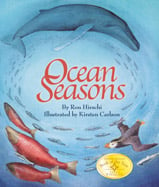Alignment to Standards for MT

| Grade | Number | Standard |
|---|---|---|
| 1 | S3.2.gr1.A. | Define herbivore and carnivore |
| 1 | S3.2.gr1.B. | Classify herbivore/carnivore |
| 1 | S3.2.gr1.C. | Define a food chain |
| 1 | S3.2.gr1.D. | Illustrate a food chain |
| 1 | S4.1.1-4 | Describe and give examples of earths changing features: Earth, planet, star, sun, land, water, lake, pond, river, mountain, desert, valley, volcano, ocean |
| 1 | S4.1.gr1.A. | Identify examples of land features: mountain, hill, valley, volcano, land, planet |
| 1 | S4.1.gr1.B. | Identify examples of water features: water, lake, pond, river, mountain, desert, valley, volcano, ocean |
| 2 | S3.1.gr3,4 | plants and animals have structures and systems that serve different functions for growth, survival, and reproduction |
| 2 | S3.3.gr2.B. | Describe an animal life cycle |
| 2 | S3.3.gr2.C. | Identify the stages of the life cycle (birth, growth, reproduction, death) |
| 2 | S3.3.gr2.D. | plant and animal life cycles. life cycle, seed, egg, reproduce, adult, grow, change, development, plant, animal |
| 2 | S4.1.gr2.A. | Compare/contrast earths natural features: Earth, land, water, lake, pond, river, mountain, desert, valley, volcano, ocean |
| 2 | S4.5.gr2.A. | List the four seasons |
| 2 | S4.5.gr2.B. | Identify characteristics of each season |
| 2 | S4.5.gr2.C. | Compare/contrast the seasons: fall, autumn, winter, spring, summer, season |
| 2 | S4.5.grK-4. | Identify seasons and explain the difference between weather and climate |
| 3 | S2.2.gr3.B. | Classify objects according to their physical properties. i.e., size, shape, color, texture, mass |
| 3 | S3.1.gr3.B. | Identify plant and animal structures, i.e., plants: root, stem, leaf. animal: bones, skin living, plant, animal, energy, habitat, nutrients, oxygen |
| 3 | S3.2.gr3.A. | Identify that from food, animals obtain energy and materials for body repair and growth. |
| 3 | S3.2.gr3.C. | how and why energy sources are needed to sustain life. |
| 3 | S3.3.gr2,3. | trace the life cycles of different plants and animals and discuss how they are differ from species to species: life cycle, animal kingdom, species, organism, plant kingdom |
| 3 | S3.3.gr3.B. | Compare the life cycle of two different organisms in the animal kingdom. |
| 3 | S3.4.gr3-4 | cause and effect relationships between nonliving and living components with ecosystems; and explain individual response to the changes in the environment including identifying differences between inherited, instinctual, and learned behaviors |
| 3 | S4.5.gr3.A. | Distinguish between weather and climate |
| 4 | S3.1.gr4.D. | Identify that animals have systems for certain functions |
| 4 | S3.2.gr4.A. | Define producer, consumer, decomposer, food chain, food web. |
| 4 | S3.2.gr4.B. | Explain the difference between a food chain and a food web. |
| 4 | S3.2.gr4.C. | Illustrate and describe the relationships in food chains and food webs |
| 4 | S3.4.gr4.B. | Identify adaptations in a variety of organisms that are specific to survival in their environment. |
| 4 | S3.4.gr4.C. | Define instinctual behaviors, inherited behaviors, and learned behaviors. |
| 4 | S3.4.gr4.D. | Classify living things by instinctual, inherited, and learned behaviors. |
| 4 | S3.4.gr4.E. | Compare and contrast the instinctual, inherited, and learned behaviors |
| 4 | S3.4.gr4.F. | Define predator, prey, competition |
| 4 | S3.4.gr4.G. | Identify examples of predator/prey relationships and competition |
| 4 | S4.4.gr4.G. | Discuss trends within the patterns |
| K | S4.1.grK.B. | List earths features |
| K | S4.1.grK.C. | Identify local land and water features |
| K-4 | S3.K-4 | characteristics, structures and function of living things, the process and diversity of life, and how living organisms interact with each other and their environment. |